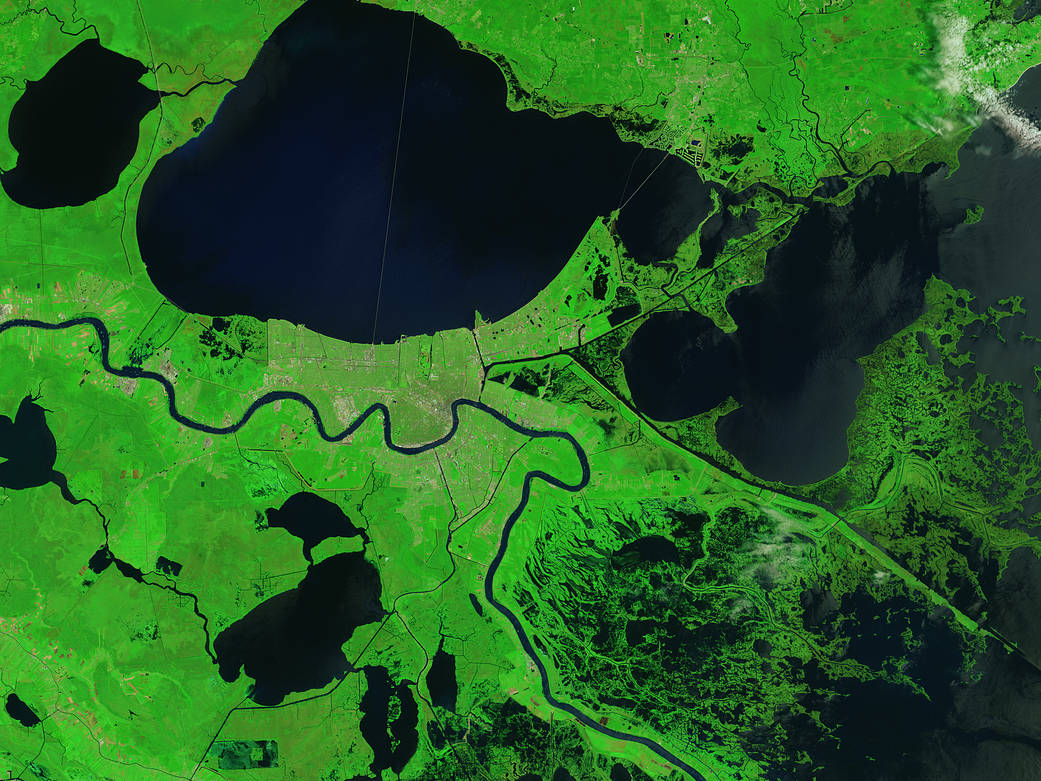Julian Allen Award
NASA science seeks to understand the biogeochemical processes underlying the terrestrial carbon cycle as a crucial means to evaluate global biological functions and land use change, explain the variability in atmospheric composition, and predict future climate conditions. Global models used by NASA atmospheric circulation simulations or data assimilation groups require a mechanistic terrestrial ecosystem component representing a broad variety of biological and physical processes on timescales of hours to decades.
The paper by Potter et al. (1993) introducing and fully documenting the Carnegie-Ames-Stanford Approach (CASA) terrestrial carbon model was the first such terrestrial CO2 exchange model of its kind – representing a major milestone in providing such a biogeochemical model for the global carbon science community and embedding the NASA Ames Research Center in the name of the model itself. Christopher Potter (ARC Code SGE) was the senior author on this first peer-reviewed CASA model paper from 1993 in one of the leading journals, Global Biogeochemical Cycles, for the American Geophysical Union. As partners in a NASA Interdisciplinary Science (IDS) team with Stanford University, C. Potter, Pamela Matson, and Steven Klooster (Code SGE) did the vast majority of the paper’s work at ARC, including designing, writing, and running the original CASA model computer code, including analysis of the first annual CASA model results, and writing all the paper drafts for review and revisions by all other co-authors and peer-reviewers.
Over the past 30 years, this CASA model paper has been cited over 3,120 times by other journal publications, as tracked in Google Scholar. The NASA-CASA model has become arguably the most used and cited terrestrial carbon model in history, and it was the first such model to directly import NASA satellite imagery for carbon cycle estimates, including the NASA MODIS products for monthly inputs of plant production globally. The CASA model from this 1993 publication by Potter et al. is still used routinely at Goddard Space Flight Center (GSFC) and the Jet Propulsion Laboratory (JPL) as part of NASA’s current Carbon Monitoring System (CMS), and as the key diagnostic terrestrial model for the science foundation of NASA’s Orbiting Carbon Observatory-2 (OCO-2) mission. It is also being developed into an open-source Python version, called CASA Lite, to be hosted and shared from NASA ARC by end of calendar year 2023 – further expanding CASA into the Transform into Open Science (TOPS) era. The unique combination of CASA model outputs included the response of CO2, CH4 (methane), and N2O (nitrous oxide) greenhouse gas exchange in terrestrial ecosystems to interannual climate variability in a transient simulation model, all of which filled a huge knowledge gap. No other global computer model presently in use generates all these biosphere greenhouse gas emissions across all of Earth’s land surfaces. Current state-of-the-science top-down and bottom-up atmospheric models, like NOAA’s Carbon Tracker (https://gml.noaa.gov/ccgg/carbontracker/), GEOS-Chem (https://geoschem.github.io/), and the TM5 global chemistry transport model (https://tm5.sourceforge.net/), use CASA to understand the sequestration and respiration of terrestrial carbon.
In summary, the CASA model paper by Potter et al. (1993) changed the entire field of global biogeochemical research and put NASA satellite imagery into a prominent leading role in carbon cycle science, where it has remained for the past three decades.
Full paper citation: Potter, C. S., J. T. Randerson, C. B. Field, P. A. Matson, P. M. Vitousek, H. A. Mooney, and S. A. Klooster (1993), Terrestrial ecosystem production: A process-oriented model based on global satellite and surface data, Global Biogeochemical Cycles, 7, 811–842.
Link to download paper pdf: https://agupubs.onlinelibrary.wiley.com/doi/pdf/10.1029/93GB02725



























